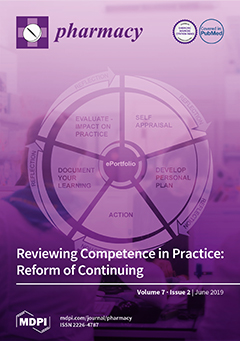Introduction: Pharmacist roles promoting safe opioid use are recognized in literature and practice. Pharmacists can offer services such as counseling on opioid risks, naloxone dispensing, education on opioid storage and disposal, prescription drug monitoring program (PDMP) utilization, opioid deprescribing, and providing resources for
[...] Read more.
Introduction: Pharmacist roles promoting safe opioid use are recognized in literature and practice. Pharmacists can offer services such as counseling on opioid risks, naloxone dispensing, education on opioid storage and disposal, prescription drug monitoring program (PDMP) utilization, opioid deprescribing, and providing resources for addiction treatment to help mitigate the opioid crisis.
Objective: This commentary seeks to describe current and potential roles for pharmacists to combat the United States opioid crisis and identify key factors affecting service provision.
Methods: The paper summarizes evidence-based studies describing current pharmacist roles and services, factors affecting service implementation, and strategies to further improve pharmacist roles and services related to promoting safe opioid use for patients.
Results: Pharmacists recognize their roles and responsibilities to counsel patients on opioid risks, dispense naloxone, educate on opioid storage and disposal, utilize prescription drug monitoring programs (PDMPs), offer opioid deprescribing, and provide resources for addiction treatment. However, pharmacists express low confidence, time, and training as barriers to service provision. This suggests a need for structured training, resources, and organizational support for pharmacists to improve confidence and participation in such services.
Conclusions: Although pharmacists are aware of roles and responsibilities to help reduce the opioid crisis, more training, education, organizational support and resources are needed to increase their ability to embody these roles.
Full article





